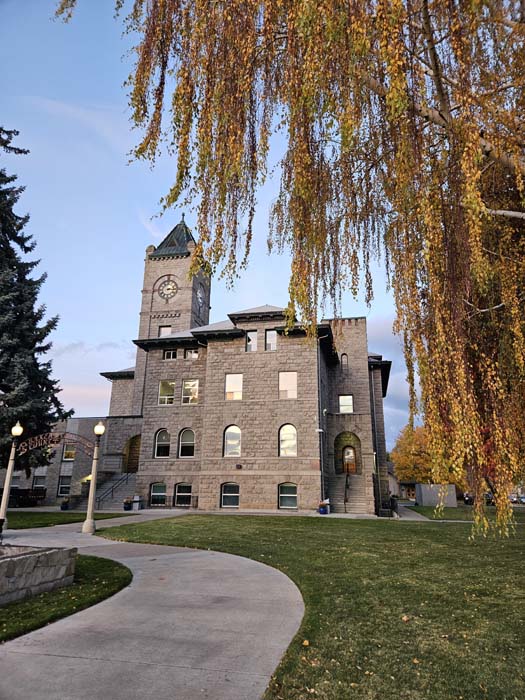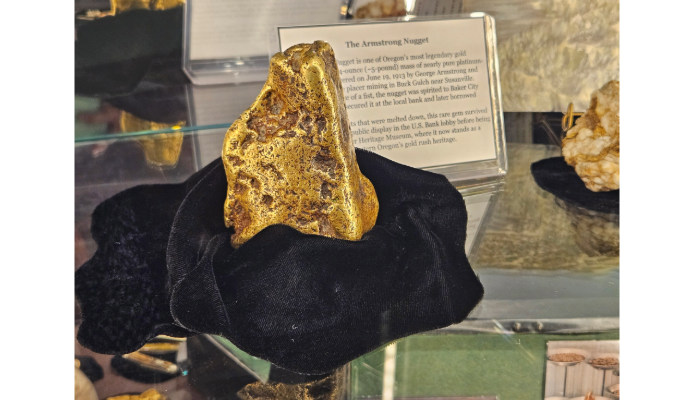Splash in the face kindles love for Oregon rivers
Published 10:25 am Friday, September 9, 2016
I didn’t appreciate how ubiquitous and how interesting Oregon’s rivers are until one of them went up my nose.
Trending
This liquid epiphany happened on the North Santiam River. The stream, which begins at Santiam Lake near the base of Three Fingered Jack in the High Cascades, flows west and is one of the larger tributaries of Oregon’s second-biggest river, the Willamette.
I was trying to balance on the gunwale of a rubber raft as it plunged into the Class III rapids called Spencer’s Hole.
For an experienced river runner, this short stretch of whitewater where the North Santiam squeezes through a lava chute is little more than a ripple.
Trending
But for a beginner — my only previous raft trip, on the Salmon River near Riggins, Idaho, happened almost 30 years ago — the run through Spencer’s Hole seemed to me plenty daring.
And plenty damp, although my brother-in-law, Jonathan DeRenzo, who was riding on the bow, endured a much more thorough dousing than I did.
The two-hour guided trip from Packsaddle Park to the bridge at Mill City was a gift from my parents, whose home is just a few hundred feet upriver from the takeout spot.
I grew up in Stayton, a town on the North Santiam’s bank about 20 miles downstream, so I thought I was pretty familiar with the river.
Except almost all of my previous views of the North Santiam came from its shores.
Bouncing along the river in a raft is an altogether more intimate experience, and every bend and riffle felt new and fresh.
(Also cold. The North Santiam’s flow is regulated by Detroit and Big Cliff dams, and just a few days before our trip on Aug. 23 the dam operators started releasing water from the depths of those reservoirs. The river was running at 50 degrees — chillier than the Pacific Ocean and sufficient to cause an immediate glassy pain to grip your feet when you step in.)
As we rested for a few minutes in a sunlit eddy after splashing through Spencer’s Hole, it occurred to me that over the past several days I had, in a variety of ways and in an area spanning most of Oregon, enjoyed a broad sampling of the state’s rivers.
This was not intentional.
And without the North Santiam tossing a wave across my face I’m not sure the pattern of the previous days would even have occurred to me.
Four days earlier I hiked into the Eagle Cap Wilderness for a weekend backpacking trip with my wife, Lisa, our daughter, Olivia, my father-in-law, Howard Britton, and his son and grandson, David and Tyler.
We camped for two nights on a knoll just north of Minam Lake. This is the headwaters of two Oregon rivers — the Lostine and the Minam.
The hydrologic connection, however, is not as the names suggest. Since Wallowa County farmers built a dam on the south side of Minam Lake in the early 1920s, the lake, at 59 acres one of the larger ones in the Eagle Cap, no longer feeds the Minam River to the south. Instead the lake drains north, into the West Fork of the Lostine River.
One day Lisa and I went for a 14-mile loop hike that included three passes — Frazier, Horton and Ivan Carper. In that relatively modest distance we crossed the origins of three of the great waterways of Northeastern Oregon — the Minam and Wallowa rivers, and Eagle Creek.
We crossed the Minam twice in the initial mile and a half, the first time by a conveniently placed log, the second by hopping on boulders exposed by the river’s diminished late-summer flow.
After crossing Frazier Pass we dropped to East Eagle Creek and followed it to its source in the pink granite cirque below Horton Pass.
There we knelt in the streamside heather, a pair of penitent (or anyway thirsty) hikers, and drank from the creek through a filter-equipped plastic straw, the water as cold as what comes from a refrigerator but so incomparably crisp that it seemed almost carbonated.
On the other side of Horton Pass we jumped across one of the streams that flow into the Lake Basin and, eventually, into the West Fork of the Wallowa. On the climb up to Carper Pass we stopped at another brook to refill our bottles and splash our sweaty, dusty faces, an instant of refreshment that no air conditioner can replicate.
On the way home the next day we drove across the highway bridge at Minam, where the Wallowa, having already combined with the Lostine, and the Minam rivers come together.
The following morning we headed for Mill City. To avoid chip-sealing on Highway 26 west of John Day I opted for the Post-Paulina Highway. This route, an exceedingly low-traffic alternative, follows the Silvies River to its headwaters in willow and aspen meadows near a low divide in the Blue Mountains.
The Silvies is a sluggish river except during the spring snowmelt. This seems to me appropriate considering its water is destined not for the world’s biggest ocean, as with most of Oregon’s rivers, but rather the ignominious fate of spilling into a landlocked lake —Malheur, south of Burns — that during droughts nearly disappears.
Scarcely a dozen miles farther the highway crests a sagebrush ridge that, much like Wyoming’s South Pass, where the Oregon Trail crossed the Continental Divide, has a greater significance than the gentle terrain implies.
This ridge marks a different divide. The Silvies, to the east, flows into the Great Basin, that vast arid land where no water reaches the sea. But to the west, all waters flow eventually into either the John Day or the Deschutes rivers, both of which join the Columbia, the great river of the West, near The Dalles.
Later that day we crossed the Deschutes just west of Redmond.
I wasn’t at that moment thinking of rivers, of their meandering courses and varied destinations and how different are the headwaters of East Eagle Creek and the Silvies River.
I needed a dunking from the North Santiam, a frigid jolt that reminded me how fortunate we are to live in Oregon, a land of rivers to relish, and much else besides.
Jayson Jacoby is editor of the Baker City Herald.









